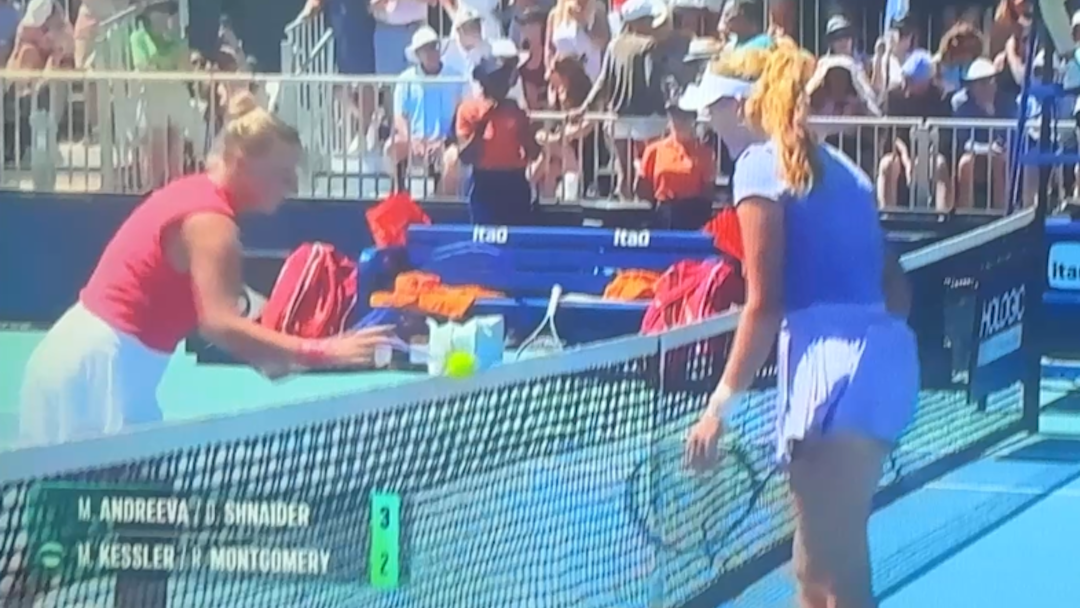This holiday weekend, I’m kicking off a series of posts inspired by the concept of the “Easter egg.” In the literal sense, an Easter egg is a brightly colored hidden treat waiting to be discovered. In my day job, the term figuratively describes hidden features or subtle references tucked away in games, media, or software. In that spirit, this weekend is an opportunity to spotlight a few of the frequently overlooked corners of the tennis ecosystem. These tennis “Easter eggs” deserve a much closer look.
Last week, I was surprised to learn that Sherri Rejebian, the long-time local league coordinator for the Dallas Tennis Association (DTA), will be stepping aside. The news came via an emailed announcement from the organization that advertised the position as open. While I am sorry to see her go, this sparks a perfect opportunity to reflect on how vital—and often underappreciated—the local league coordinator role can be to the success of local USTA league play.
When a league runs smoothly, players rarely stop to think at all about the effort that goes on behind the scenes. However, when a problem arises, it’s often the League Coordinator who ends up in the crosshairs—even when they’re doing exactly what the rules dictate. It’s a role that demands accuracy, patience, and diplomacy. League Coordinators don’t get nearly enough credit for their work.
That said, I want to take a moment to recognize and thank Sherri for what she has done to support tennis in my local area. Running a league as large and active as the DTA is no small feat. It takes significant time, energy, and resilience to manage player expectations, interpret rules fairly, and keep things moving week after week. I genuinely respect the level of professionalism and commitment she exhibited. She genuinely wanted to help players and support the tennis competition, even in the face of difficult decisions. While disagreements over rules are inevitable in such a charged setting, I could always see the logical through line of decisions that were made.
With the job description now posted, it’s worth considering the qualities that make for a strong League Coordinator. The DTA is looking for someone with deep knowledge of USTA regulations and experience with adult leagues, as well as someone who communicates clearly and can deftly handle conflicts. Administrative competence is a must—this job involves managing registrations, coordinating with captains/officials/volunteers, and juggling a calendar full of formats and flights. Just as important is the ability to be an ambassador for the sport: someone who fosters a positive playing environment, understands the pulse of the local tennis community, and builds trust through fair and empathetic leadership.
If other league coordinators stumble across the advertised opening, I suspect that many will be shocked to learn that in DTA the role is a salaried position. USTA Texas has a patchwork of League Coordinator compensation models. In Dallas, it’s a salaried full-time job. In mid-sized markets, the role may come with a small stipend or a percentage of registration fees. And in most smaller areas, the position is entirely volunteer-based. These disparities create a “Tale of Two Cities” dynamic, where more resourced areas have the advantage of continuity, professionalism, and institutional knowledge. At the same time, smaller areas may struggle with high turnover and limited experience for people in the role. It’s a structural imbalance that deserves more consideration.
To the outgoing DTA League Coordinator—thank you for your many years of service and support for competitive tennis in the Metroplex. Additionally, to every local league coordinator across Texas and the USTA system, your work matters, and I appreciate everything you do. It’s a tough and often thankless job, but USTA League wouldn’t run at all without your efforts.
For players in Dallas who have ever thought, “How hard can it be?” or believed they could run USTA Leagues more effectively, here’s your chance to step up—the job is open. The League Coordinator role may seem simple from the outside, but it’s a demanding position that requires juggling complex logistics, interpreting nuanced rules, and fielding a constant stream of questions and complaints—all while staying composed and fair. If you’ve ever said, “I could do better,” now’s the perfect time to throw your name in the hat.
It’s tougher than it looks. Besides, I can probably use the fodder for future blog posts.
- Local League Coordinator Job Description, Dallas Tennis Association, viewed April 17, 2025.



